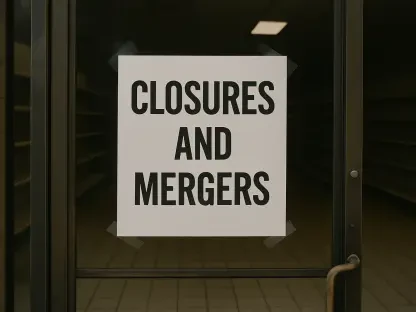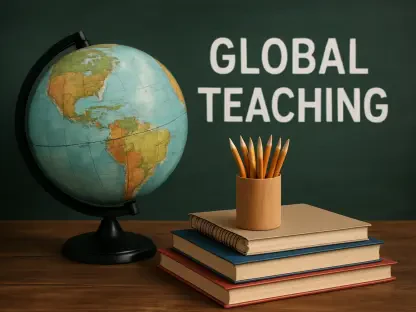The success of comprehensive education lies in recognizing and accommodating the varied learning needs of students. Jeremy Kaplan’s journey as an educator underscores the transformative power of explicit instruction, especially to support students who struggle with traditional, inquiry-based learning methods. With over three decades of experience in New York City schools, Kaplan has witnessed a shift in his own educational philosophy—from exclusive reliance on progressive, student-centered learning to a balanced approach that integrates explicit instruction. Through his experiential narrative, Kaplan advocates for the “I-do, we-do, you-do” strategy, arguing that it bridges learning gaps and fosters inclusive education.
The Essence of Explicit Instruction
Explicit instruction is not just a teaching methodology; it is a structured approach where teachers model tasks, guide students through practice, and supervise independent attempts, providing corrective feedback as needed. This method aligns with the “science of reading” practices, which increasingly favor phonics-based approaches to reading instruction. Kaplan underscores that the systematic progression inherent in explicit instruction ensures that students aren’t left to navigate complex concepts on their own. The growing body of empirical evidence supporting explicit instruction highlights its efficacy in assisting struggling learners, making it an essential component of modern education.
Kaplan’s pedagogical journey is marked by a significant shift in his beliefs—from a staunch proponent of purely student-driven inquiry to an advocate for a more integrative approach. Initially, he lauded project-based, student-centered learning for its emphasis on higher-level thinking and problem-solving. However, practical experiences and emerging evidence revealed that this approach, while advantageous, does not cater to all students, especially those facing specific learning challenges. Through this realization, Kaplan emphasizes the need for a balanced educational framework that incorporates both explicit instruction and project-based learning.
Personal Experiences and Shifting Beliefs
Kaplan’s personal experiences, particularly his daughter’s battle with severe dyslexia and dysgraphia, serve as powerful illustrations of the need for explicit instruction. Enrolled in a progressive school focused on project-based learning, Kaplan’s daughter struggled to keep up, underscoring the limitations of an exclusively inquiry-based model for students with specific learning difficulties. This profound experience catalyzed Kaplan’s advocacy for explicit instruction as a necessary complement to inquiry-based learning, especially for students requiring more structured support.
In his capacity as assistant principal, Kaplan has actively integrated explicit instruction into his teaching and professional development sessions. By adapting his ninth-grade Global History lessons, Kaplan demonstrates how explicit instruction can support students in engaging with higher-order thinking routines, such as Harvard’s Project Zero’s “see-think-wonder.” He emphasizes that explicit instruction transcends traditional lectures; it is a calculated scaffolding process designed to equip students with the necessary skills and knowledge to tackle complex tasks independently. This nuanced approach not only builds foundational skills but also prepares students to think critically and analytically.
Addressing Misconceptions About Explicit Instruction
Despite its benefits, explicit instruction often faces resistance from educators who misconstrue it as being at odds with student-centered learning. Kaplan addresses these misconceptions by clarifying that explicit instruction can indeed be student-centered when it involves active student participation, continuous assessment, and feedback. He advocates for a balanced methodology where teacher-directed instruction and independent student engagement are harmoniously integrated. This approach allows students to internalize the material through guided practice while fostering a conducive learning environment.
The overarching consensus within Kaplan’s argument is that a balanced implementation of both explicit instruction and project-based learning is crucial for comprehensive student development. In small, progressive schools that champion project-based learning and social justice, there is sometimes a neglect of explicit instruction. This oversight, Kaplan argues, inadvertently perpetuates educational inequity by failing to adequately support struggling students. Through effective explicit instruction, these schools can fulfill their commitment to equity by ensuring that all students, regardless of their challenges, receive the foundational support they need to succeed.
Balancing Explicit Instruction and Project-Based Learning
Kaplan posits that explicit instruction should be seen as complementary to project-based learning rather than as an outdated method. While project-based learning facilitates meaningful and enduring engagement with real-world tasks, explicit instruction underpins this engagement by imparting the essential skills necessary for success. The narrative stresses that explicit instruction is not a regression but a progressive tool to make learning more inclusive and effective. By combining these approaches, educators can create an environment where students excel both in critical thinking and foundational skills.
The insights gleaned from Kaplan’s history and physical education department meetings point to a gradual shift in the pedagogical landscape. Educators who once strictly adhered to project-based methods are beginning to integrate explicit instruction, recognizing that it enhances rather than undermines student learning. Kaplan highlights that the resistance to explicit instruction often stems from a misunderstanding of its potential to be student-centered. By incorporating explicit instruction into the curriculum, teachers can provide a more holistic educational experience that caters to diverse learning needs.
Future Directions in Education
The success of comprehensive education is rooted in understanding and addressing the diverse learning needs of students. Jeremy Kaplan’s evolution as an educator highlights the transformative effects of explicit instruction, particularly for students who find traditional, inquiry-based methods challenging. With over 30 years of experience in New York City schools, Kaplan has observed a significant shift in his educational philosophy. Initially a proponent of progressive, student-centered learning, he now champions a balanced approach that incorporates explicit instruction. Kaplan’s experiential narrative promotes the “I-do, we-do, you-do” strategy, advocating that this method not only bridges learning gaps but also fosters a more inclusive education environment. This approach encourages teachers to first model a task (“I-do”), then collaborate with students (“we-do”), and finally allow students to practice independently (“you-do”). By blending these strategies, educators can cater to a wide range of learning styles, ensuring that all students have the opportunity to succeed.









